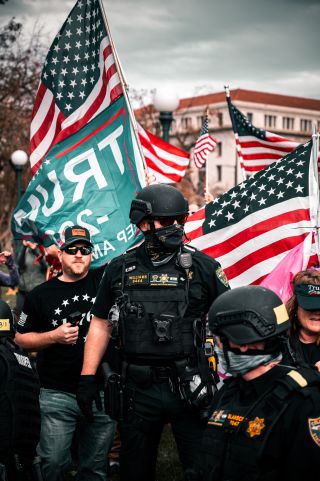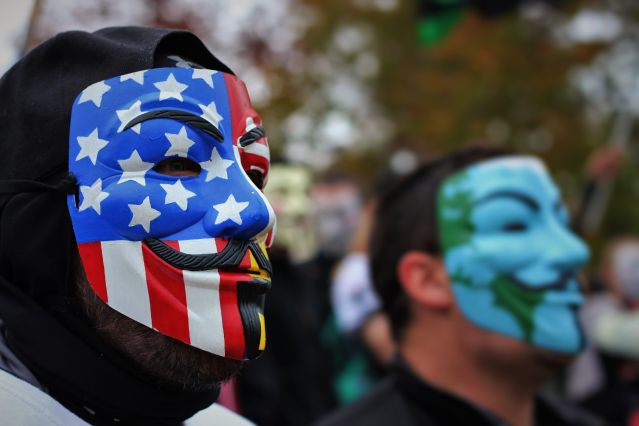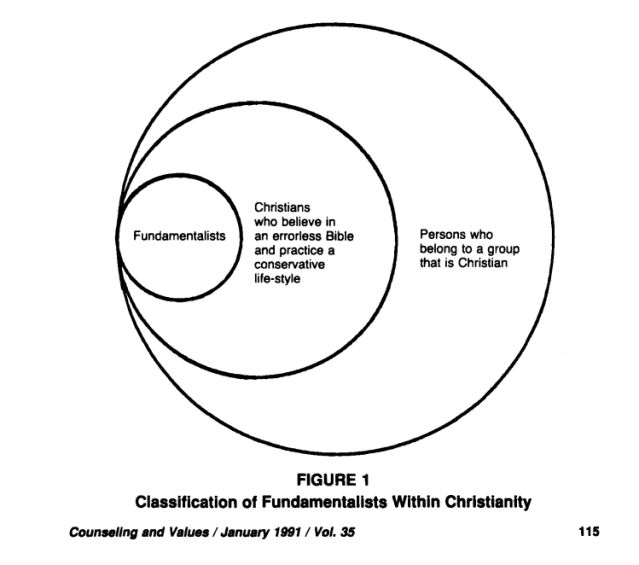President Donald Trump
Why Extremists and Hate Groups Often Play the Victim
Narcissistic victimhood may render extremists too rivalrous to be teachable.
Updated April 24, 2024 Reviewed by Devon Frye
Key points
- There are hundreds of hate groups and extremist groups in the U.S., many of which hold far-right ideologies.
- Both collective and individual narcissism involve avoiding inadequacy by .
- "Dominant group victimhood" can agitate groups that sense their influence and visibility being decentered.
- Authoritarianism is a common thread between collective narcissism, dominant group victimhood, and extremism.

In 2021, The Southern Poverty Law Center (SPLC) updated its database to include 72 extremist groups, 135 extremist leaders, and, on its Hate Map, 733 associated hate groups.
The 733 hate groups can be sorted into a list of 24 hate ideologies. These include Christian identity extremism, Holocaust denialism, male supremacy, neo-confederacy, racist skinheads, Radical Traditional Catholicism, the Alternative Right, and white nationalism, among several others.

Not all extremist groups are hate groups, yet many are. The difference is that extremist groups are more likely to endorse or orchestrate acts of terrorism, defined as "the calculated use of violence or threat of violence to inculcate fear. Terrorism is intended to coerce or intimidate governments or societies in the pursuit of goals that are generally political, religious, or ideological. The focus of extremism is often broader than just asserting the supremacy of an identity."
The Department of Justice describes “extremist activities” as “advocating for unlawful force or violence to achieve [ideological] goals” or “advocating widespread unlawful discrimination based on protected characteristics.”
An everyday example of extremism would be a church sermon focused on “rooting out homosexuals.” The calculated framing suggests endorsement of systematically planned extermination or genocide––exactly what the Nazis did to gay men. An extremist leader is one who becomes known for such messages or broadcasts.
To be sure, extremist groups are not always more dangerous than hate groups, which SPLC defines as:
“an organization or collection of individuals that—based on its official statements or principles, the statements of its leaders, or its activities—has beliefs or practices that attack or malign an entire class of people, typically for their immutable characteristics."
Indeed, hate groups breed and embolden extremists—according to The Justice Department, “Hate groups can spawn violence, even when such groups do not directly participate in the crime.”
Individual vs. Collective Narcissism and Extremism
In a previous article, "How Healthy Self-Esteem and Clinical Narcissism Differ," I discussed how individual narcissism functions to protect a false reality, and is not just about excessive confidence.
.jpg?itok=ZDi2w3ma)
Evidence suggests that individuals with clinical narcissism were often raised by narcissistic parents who exploited them as the golden child (who could better their image) or the scapegoat child (who was a receptacle for their rageful shame). This type of precarious attachment can feel like walking through a minefield, and thus, implant a conditional view of love. When adult narcissists devalue those who cannot boost their self-image, they are often merely replicating the devaluation they experienced during childhood.
Although narcissists typically work hard to mask their repressed insecurities by basking in others' limelight, they work just as hard to convince themselves that they have no insecurities to begin with. You can often spot a narcissist by how viciously they respond to you debunking the truth about themselves that they desperately want to avoid.
Fear of being exposed and shamed for their actual mediocrity is often the driving force behind their escapism into fantasies of infallibility or superiority. Such delusions ensure they are forever shielded from the humiliation and self-hatred that traumatized their younger selves.
In conflict, those who are especially high in narcissism tend not to play fair, as this might lead to being exposed. They may hold others to standards not even they can meet, become enraged at even the most considerately-delivered criticism, fail to take responsibility for their actions, and display little remorse about lying or twisting a story to avoid accountability. Frequently, they project their own competitive need for dominance onto those around them.
Further, many narcissists steer clear of intimacy that requires vulnerability, due to a fixation on reputation, status, and impression management. Never getting too close or opening up too much can keep their true, rejected self feeling protected. Yet inauthenticity is also often how they self-sabotage. Narcissists tend to discard those who hold them accountable for their own good, or who give them honest feedback.

[Un]ironically, the Venn diagram between individual narcissism and collective narcissism is practically a circle, as the latter extends the same psychological patterns to group dynamics. Members of collectively narcissistic groups hold their group affiliation in excessively high regard. Regardless of whether or not they are individual narcissists, most members seek to fill a void of low self-worth via their affiliation. When unified, the group functions as a narcissistic entity.
Collective narcissism, just like individual narcissism, has been found to be characterized by the same desperation for external validation of a false reality/sense of superiority that functions to suppress deep-seated shame, or paranoia about being exposed as mediocre.
And just like individual narcissists, many members of collectively narcissistic groups will go to any length to protect the public perception and reputation of their ingroup. To do so is to protect their own self-perception; to do otherwise would be an admission of fallibility and a negation of supremacy.
This likely explains the overlap between many of the psychological abuse tactics used by individual and collective narcissists—for example, blame-shifting (victim-blaming an a terrorized group), gaslighting (historical denialism), and smear campaigns (dehumanizing conspiracies) all have macro/structural-level equivalents.

Collective Narcissism and Far-Right Extremism
Political psychologists in the U.S. have drawn myriad links between collective narcissism, far-right politics, and extremism. The interrelatedness is layered and has been researched from various angles (see references below).
One notable commonality is the need for authoritarian leadership in right-wing, far-right, and extremist groups. Leaders who are autocratic, fascist, and/or militaristic tend to easily dominate all three groups, as they make extremism digestible––via rhetoric, propaganda, and conspiracies––in a way that can feel urgent, empowering, and honorable. Psychologists have pointed to both Hitler and Trump as examples, as both swayed the masses with fear-mongering narratives about the economy and replacement theories linked to debunked scientific racism.
But across all three groups, dominant group victimhood is arguably the most pronounced common thread. Psychologists Stephen Reicher and Yasemen Ulusahin coined and conceptualized the phenomenon, based on a study seeking to find out which U.S. demographic could be most vulnerable to right-wing populism, a precursor to far-right extremism. Results indicated that right-wing, white evangelicals exhibited the greatest propensity to adopt an "us vs. them" view that correlates with groupthink, collective narcissism, and outgroup hostility that parallels extremist-hate ideologies.

Yet, interestingly, white evangelicals overestimate the presence of more minoritized religious groups, despite comprising the largest ethno-religious category in the U.S.—just 2.4 percent of Americans are Jewish, and only 1.4 percent are Muslim. Not only that, but white Christians, who are largely evangelical, are likely the primary demographic that most Americans would immediately associate with God, the face of wealth vs. welfare, the foundational architects of America, and most of U.S. political history.
What explains such a distorted guesstimate?
Writing in The Cut, political journalist Jesse Singal posits that overestimation makes it “easier for people to imbibe all sorts of bigoted messages: This group is coming for you and your family, they’re taking all the jobs, they don’t believe in our way of life, they secretly control everything, and so on.”
This paranoid and reactionary perception—akin to persecutory delusions of religious fundamentalism—seems to create a power structure where the most dominant group remains on top, yet uses victimhood rhetoric to maintain their position.

Further, it seems that a tunnel-vision fixation on reviving the "good ol' days" can prevent formerly dominant groups from experiencing cognitive dissonance from victim-playing and victimizing simultaneously. Not only that, but collective narcissism—tinged with entitlement—could compel these groups to gravitate toward far-right political orientations, which typically stress authoritarianism, conformity, Darwinism, monoculturalism, and ultra-nationalism.
This might explain why seventy-four percent of white evangelicals who see themselves as a religious minority believe Trump was “part of God’s plan," despite much of his behavior and policy agendas contradicting Christian dogma and stated ethics. That suggests just how powerful the fear of losing power can be.

It is common for some to speculate that far-right extremism is borne of pathological anger, irrationality, or sociopathy. But zeroing in on the the underlying distortion of victimhood that drives radicalization might present a more strategic alternative for eradicating targeted violence, hatred, and, intimidation.
Whether or not extremists genuinely buy into their own victim-playing is something we might never know. Regardless, for those of us who care about democracy, our local communities, and our neighbors, I argue that our job is to make it impossible for them to ignore reality.
References
Adolph, R. B. (2021). American Extremism. Atlantisch Perspectief, 45(3), 25-29.
Amarasingam, A., & Argentino, M. A. (2020). The QAnon conspiracy theory: A security threat in the making. CTC Sentinel, 13(7), 37-44.
Bai, H., & Federico, C. M. (2021). White and minority demographic shifts, intergroup threat, and right-wing extremism. Journal of Experimental Social Psychology, 94, 104-114
Cichocka, A., & Cislak, A. (2020). Nationalism as collective narcissism. Current Opinion in Behavioral Sciences, 34, 69-74.
Flannery, B. J., Watt, S. E., & Phillips, W. J. (2021). “To Protect and to (Pre) serve”: The moderating effects of right‐wing protective popular nationalism on aggressive tendencies toward ethnic minorities. Journal of Theoretical Social Psychology, 5(2), 103-113.
Holt, T. J., Freilich, J. D., & Chermak, S. M. (2022). Examining the online expression of ideology among far-right extremist forum users. Terrorism and Political Violence, 34(2), 364-384.
Michael, G. (2003). Confronting right wing extremism and terrorism in the USA. Routledge.
O'Donovan, C. (2022). Collective capabilities for resisting far-right extremism online and in the real world. Journal of Peer Production, (15).




